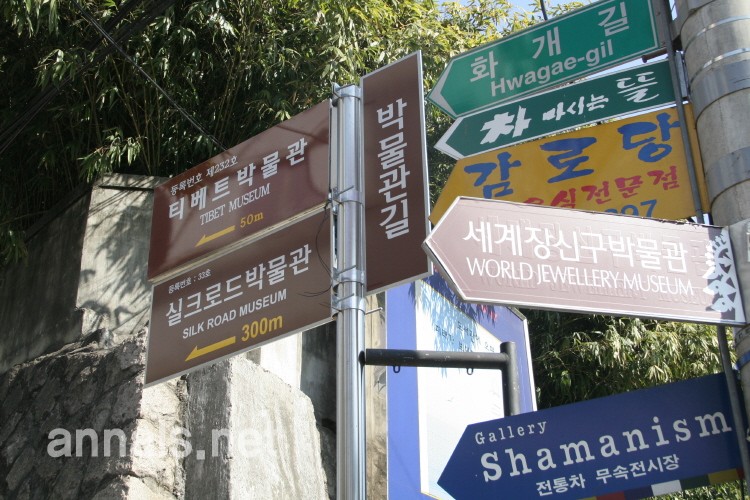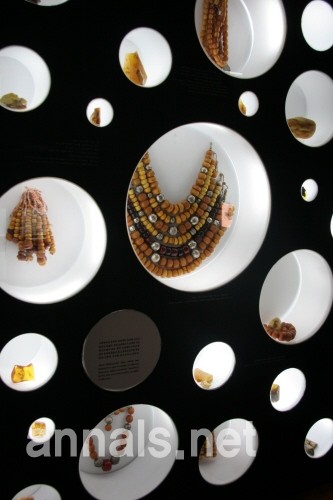A report on small but brilliant contributors of our culture
Private yet Public
 | ||
A report on small but brilliant contributors of our culture
We all have had some kind of “treasure box” of our own when we were a child. We collected our precious ddackji, Barbie dolls or plastic jewelries in those boxes. We’ve lost them as time went on, yet there are people who have continued to keep their treasures even after they grew up ? they are the founders of private museums.
Private museums; the way they walked
The Law for Promotion of Museums defines private museums as those established and operated by corporations, organizations or individuals. According to a survey conducted by the Ministry of Culture and Tourism in 2003, 48.7% of museums in our society are considered private museums. Amongst them, museums run by individual collectors are called “pure private museums,” which are, in general, on a small scale. “We currently have approximately 220 private museums and about 120 of them are run by individual collectors,” says Jeon Bo-sam, the President of KPMA (Korean Private Museums Association).
The private museums in Korea have a history of about 30 years, with two exceptional expansion periods. In the early 90’s, Lee O-young, the Minister of Culture, had an ambitious plan to establish a thousand of museums in 10 years; 30% of them were to be private museums. He made a law to support the foundation of museums and galleries, which, as a result, served as stimulation for the development of Korea’s exhibition culture and greatly increased the number of private museums.
The other expansion is currently taking place. Since 2004, the government has allocated a part of the lottery fund to support private museums, especially when they hold special exhibitions. “The government also started to extend tax favors and ease regulations associated with the foundation and administration of museums,” explains Park Tcheon-nahm, the senior curator of the Seoul Museum of Art. Such current change in governmental supports resulted in the substantial growth of private museums.
 | ||
Human features found in private museums
Most private museums* started from individual collectors’ interests in a certain area. This makes them create a personal atmosphere that could only be found in private museums; distinct from public museums on large scales, they reveal the love and devotion of their founders. WJM (World Jewellery Museum) and Owl museum on “Museum Road” in Sam-chung dong, where a lot of exemplary private museums are gathered, are good examples. The director Lee Gang-won of WJM collected jewelry from around the world with her own hands, while she was living abroad with her husband who was a diplomat. The museum exhibits jewelry portraying the ethnic culture of various countries beautifully. Bae Myung-hee, the director of Owl museum who loves to be called an “Owl Mom,” gathered about 2,500 antiques and art crafts with an owl motif since she was 15. Her fascination for owls has lasted for nearly 40 years.
 | ||
Contributions to our culture
The expansion of private museums has some positive effects on our culture. First and foremost, they are significant in the aspect of promoting cultural diversity. In truth, there is no limit to the infinite themes of private museums; they range from jewelry, toys, locks, knives, Tibetan arts, to antiques with owl motifs. There are even private museums displaying art crafts with sexual meanings. The diversity of private museums enrich our culture with their research in various fields and their introduction of rare items to the public. In addition, they conserve valuable cultures that would have been forgotten; it strengthens cultural diversity of the society as well. For instance, a large number of Korean private museums display exhibits related to traditional culture such as Korean pottery or handicrafts. Those museums help people get a glimpse of their ancestors’ lives, especially since society is forgetting the days before Westernization at a quick rate.
The increasing number of private museums also indicates the transformation of our society’s the culture of collecting and exhibiting art. “The growth of private museums can be understood as a voluntary manifestation in the sense of unity among the members of a society. Pride and active participation of people in a cultural mechanism are shown through the growth of private museums,” explains Prof. Park Nak-gyu of Seoul National University, Dept. of Aesthetics. Indeed, the founders of private museums feel happy about their role in the cultural development of the society. Most of them operate their museums in order to appreciate their possessions with others. With their open-minded motives, private museums are on their way to be established as a new type of cultural donation. Park Tcheon-nahm analyzes, “In the past, enjoying a certain piece or relic was limited to the possessor. Such custom, however, has been changing to a more democratic and open form due to the conversion of people’s notions.”
 | ||
For a better future of private museums
In spite of their important role in our culture, private museums need some improvements for a brighter future. Jeon insists two urgent needs they are facing: “One is to secure aid from the government; the other is to ensure specialized operation of the museums themselves.” Despite some recent policies in favor of private museums, Korea’s governmental support for private museums is far below that of culturally advanced nations like France or Japan. For example, some museums are not officially registered because they cannot afford the costs to meet the conditions for registration. Kim Yoon-jung, the Deputy director?curator of WJM, worries, “It is good that the number of private museums are growing rapidly these days, but I must worry about how many of them will survive in 10 years.”
In addtion, efforts from the private museums themselves are equally important for future development. “Private museums in Korea are now in a transition period,” says Jeon. “Most of them were managed by individual collectors who had personal interests in a certain field before. Now the young experts who studied museology are taking the older generation’s place.” Such changes seem to enhance the specialty for the operation and the management of private museums. Still, a number of private museums do not have enough curators; it is a pressing matter for them to secure more museum experts.
* * *
 | ||
Private museums are like pearls in our culture; varying in shape, yet each of them is invaluable. Though these museums have been established by the private sector, no one would doubt that they are public goods. Appropriate aids from the government and more interests from people would provide better soil for them to grow.
*This article focuses mainly on pure private museum; hence most “private museums” in this article refer to pure private ones hereinafter.
Other Private Museums to Visit
Museum of Korea Indigenous Straw and Handycraft (http://www.zipul.co.kr)
Lock Museum (http://www.lockmuseum.org)
Toy Kino (http://www.toykino.com)
Onggi Folk Museum (http://www.onggimuseum.org)
Tibet Museum (http://www.tibetmuseum.co.kr)

